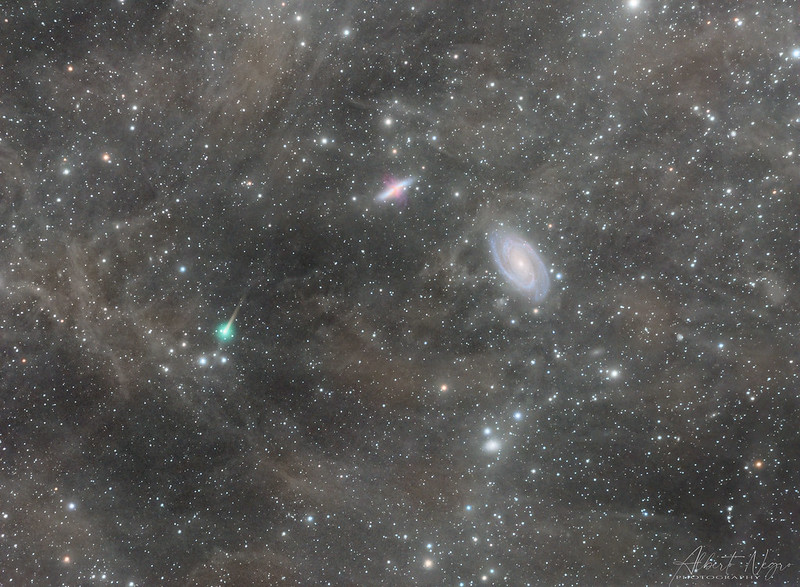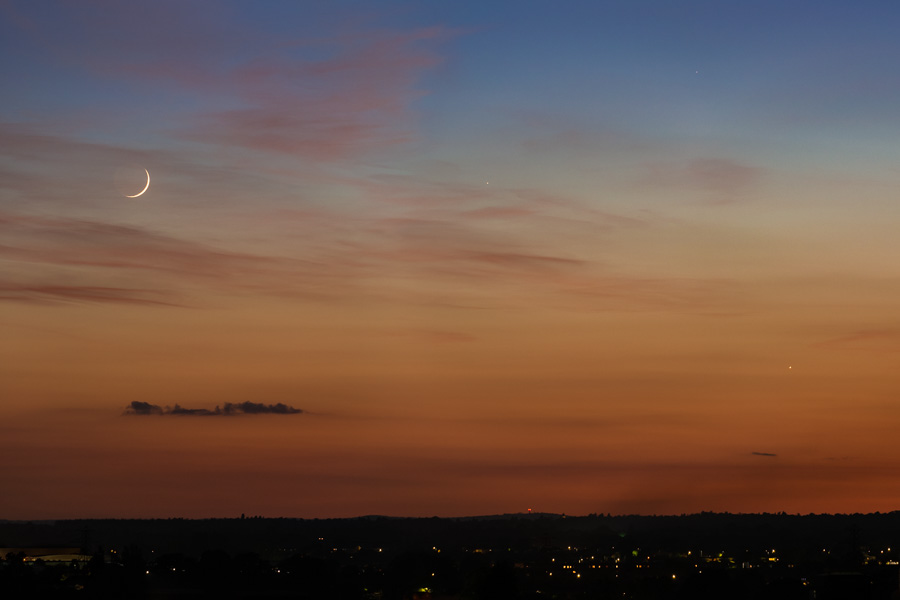It is an area of the sky that is not very photogenic, but it gives a good idea of the vastness of the universe.
Data and hi res link:
 Coma Cluster - Abell 1656 by Paolo De Salvatore, su Flickr
Coma Cluster - Abell 1656 by Paolo De Salvatore, su Flickr Coma Cluster - Abell 1656 by Paolo De Salvatore, su Flickr
Coma Cluster - Abell 1656 by Paolo De Salvatore, su Flickr
 Venus-Mercury Conjunction by Yilun Ma, on Flickr
Venus-Mercury Conjunction by Yilun Ma, on FlickrThanky you, Ann! I'm glad that you like this image!Ann wrote: ↑Wed May 20, 2020 5:50 pmI absolutely love this image of circa 4 billion-year-old open cluster M67 and its many-colored stars. As a lover of all things blue, I am of course delighted to find a true blue B-type star, HIP 43465, a blue straggler, in this cluster (at bottom right). Note that there are a few other relatively blue stars in M67, and note the striking scarcity of blue stars in the field.tommy_h wrote: ↑Tue May 12, 2020 8:03 pm Messier 67
http://www.distant-lights.at/m67-2020_02_19.htm
Copyright: Thomas Henne
M67 rules, and this is a superb photo, Thomas!
Ann
Haha thanks, yeah you're right, could be a dog.Ann wrote: ↑Mon May 18, 2020 5:53 amfelix_wegerer wrote: ↑Mon May 11, 2020 9:36 pm Heart and Fishhead Nebula 3 panel mosaic in SHO, taken in April 2020 from Linz, Austria. School Observatory. 30+h integration
Heart_Fish_SHO_crop.jpg
Hope you like it, clear skies!Heart Nebula as a dog.pngFelix, that's a great mosaic of the Heart Nebula with superb detail.
Hope you don't mind that I see a dog in it!
Ann
 Clouds of Cygnus by Robin Onderka, on Flickr
Clouds of Cygnus by Robin Onderka, on Flickr IFN2017T2FLICKR by Alberto Negro, su Flickr
IFN2017T2FLICKR by Alberto Negro, su FlickrPhotographed from: Beskid Mountains, Czech RepublicCygnus is very rich in nebulosity, in which North America nebula, Pelican nebula and Ha region around Sadr are the most recognizable even in nightscape photography due to its unique shape and stronger response. The remarkable shape located on a bottom right are supernova remnants, known as Cygnus Loop (or Veil Nebulae). Also the Crescent nebula put a little smile on my face when I saw it in my data as a little bonus
 Clouds of Cygnus (final) by Robin Onderka, on Flickr
Clouds of Cygnus (final) by Robin Onderka, on Flickr
 ngc 4216 Galaxy Complex - Lrgb - L (35x20 min. +10x10 min. ) from Chilescope + rgb (4h for channels) from Arizona observatory by gc.iaffaldano, su Flickr
ngc 4216 Galaxy Complex - Lrgb - L (35x20 min. +10x10 min. ) from Chilescope + rgb (4h for channels) from Arizona observatory by gc.iaffaldano, su Flickr